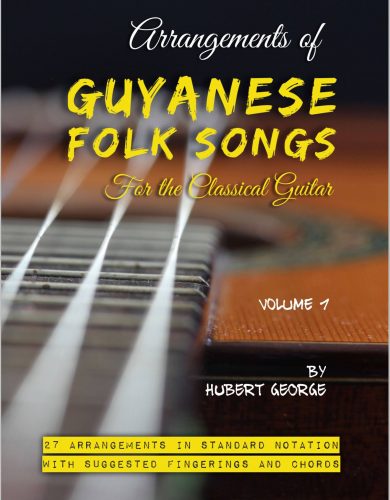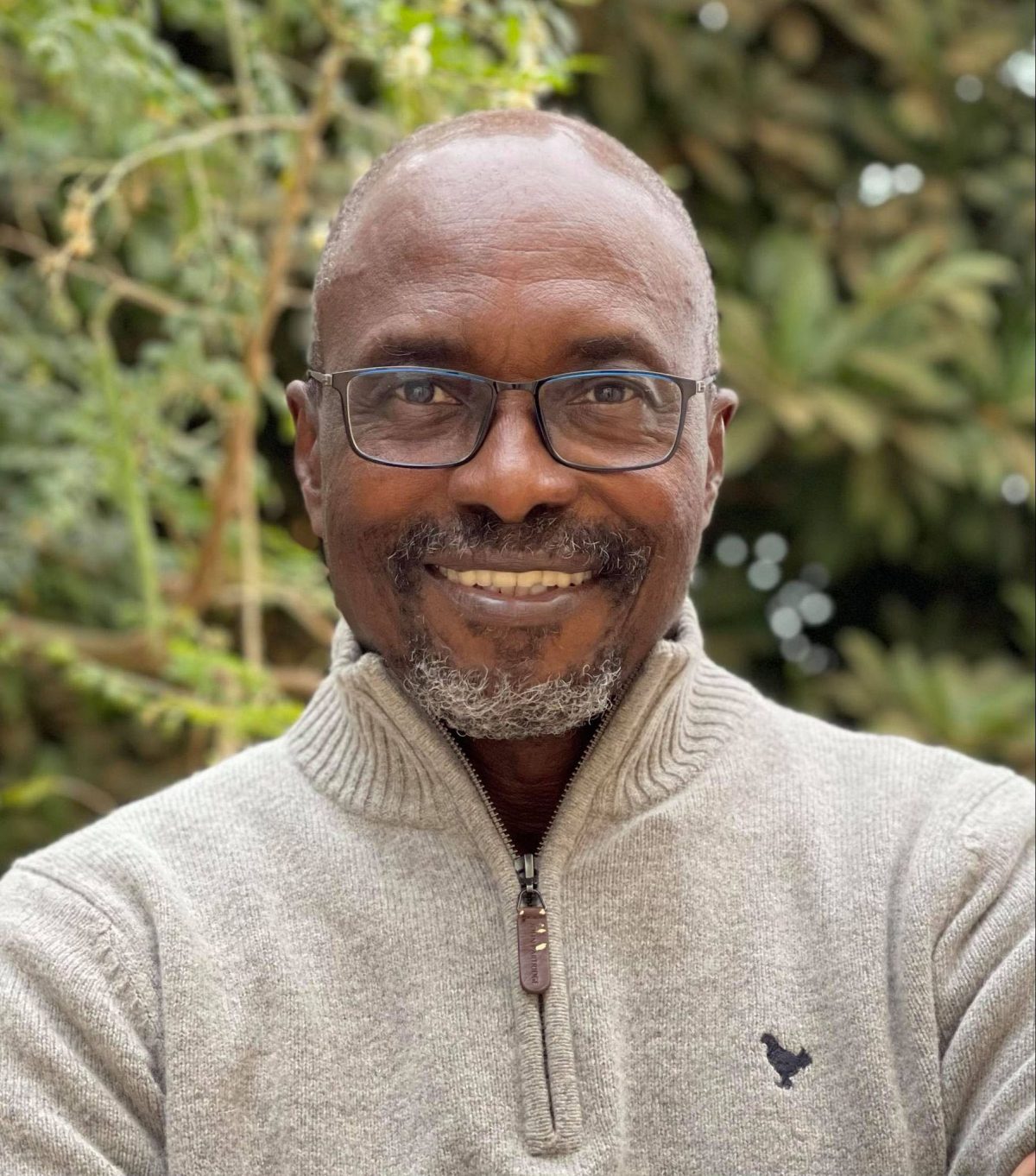US-based Guyanese and classical guitarist Hubert George is on a mission to preserve Guyanese folk songs through classical solo-guitar arrangements. His guitar playing, which began as a hobby in the 1970s, has become complex and the classical music enthusiast has gone to great lengths to have the songs available to all through sheet music.
On George’s website (guyanesefolksongs.com), he has made available approximately 100 arrangements, which he was able to compose through the compilation and transcription of late musician and educator Lynette Dolphin. “…There are indeed many more than the 100, but she had to select a limited number of the most frequently requested ones for the publication,” George pointed out. “Also, quite notably, many indigenous Amerindian folk songs are missing. I understand that Rohan Sagar, a noted Guyanese ethnomusico-logist, is currently making steps at filling this gap.”

George, who was born in Region Six (East Berbice-Corentyne), spent his earliest years in Liverpool-Manchester, Corentyne. He attended St Stephen’s Primary, Tutorial High and Queen’s College. His childhood was filled with sweet melodies of folk songs, which he sang at night with his grandmother, whom he described as a “rather strong-willed woman – a disciplinarian – who was at various times in her life a headmistress, a rice farmer and community activist.”
His love for folk songs and culture was also influenced by one of Guyana’s folk song pioneers, the late Vesta Lowe, a member of George’s extended family, who lived a stone’s throw away from his grandmother’s residence. Opposite to Lowe was where the late Philip Moore, the artist who sculpted the 1763 Monument, lived. George was surrounded by culture and art. Even his schooling supported that, as according to the guitarist, during his primary school years, all of the students were regularly exposed to folk and national songs through the “Broadcast to Schools” music program led by Lynette Dolphin.
Additionally having lived and worked in a variety of places in Guyana including the interior regions, positively influenced his interest in folk songs. George shared that he related to the challenges narrated in many of the songs, owing to experiencing different livelihoods. George’s employers in Guyana included the Ministry of Education, Parliament Office, Guyana Geology and Mines Com-mission, the Hydropower Division of the Ministry of Works and Hydraulics, and Guymine.
While his childhood was shaped by his love for folk songs, George’s fascination with playing classical music on a guitar came much later while he was pursuing his undergraduate studies at the University of New Brunswick in Canada. During this time, one of his then classmates, the late Clive David of the former Combo string band, played folk and pop songs through classical arrangements on his guitar. “He [David] used to strum his guitar as accompaniment to a group of homesick Guyanese students who would get together informally from time to time to sing folk songs. Then one day I overheard him playing the same nylon guitar but in the classical (finger picking) style during which one can readily distinguish the bass from the melody, and pick out multiple voices. It sounded like a mini orchestra; I was immediately hooked. I subsequently taught myself to play the guitar with Clive’s expert guidance. I also remember competing to learn basic songs on the guitar and share tips with another university classmate, Steve Richmond (one of my QC classmates, who lived on Anira Street in Georgetown). He was more advanced than me because of his exposure to the piano; so I learned from him as well,” George shared.
George continued to dabble on the guitar following his undergraduate years but owing to the pressure of academic studies, his professions as geological engineer and international civil servant and other pastimes such as his lifelong interest in photography, his evolution on the guitar slowed.
Following his retirement in 2012, George had a lot of free time on his hands and returned to his guitar once more. Having worked in Canada, Europe and Africa, he was absent from Guyana for 17 years. Retirement brought the nostalgia of Guyanese folk songs which he focused on when he began playing the classical guitar again as a main hobby. During his time in Africa, he observed vibrant cultural practices that drew pride at the way they celebrated their culture. The experiences made him reflect as he compared the continent with Guyana, which had a distinctly different historical trajectory. It was this disparity that motivated the guitarist to think of areas in which improvements could be made in Guyana.
“Folk songs reflect community values, attitudes, [and] morals as they evolve over time. They also relate important historical events, ceremonies, past livelihoods, and cultural practices. They provide us with a sense of from whom we came and thus a deeper sense of who we are – our identity – and correspondingly, greater self-respect and responsibility. Folk music therefore represents a cultural heritage which I feel is worthwhile preserving and promoting. A sustainable way to start this would be with the youths – by incorporating folk songs into the music curricula of the national school system,” posited George. It was this desire to foster Guyana’s heritage and return respect and adoration for the arts, particularly folk songs that led to the classical guitar arrangements of Guyanese folk songs.
George, who considers himself an amateur, enthused that creating these arrangements has provided him the “all-important cognitive stimulation” he needs in his “so-called golden years”. Added to this he gets to share easily with other interested guitar enthusiasts via his website.
In his own time, at different times of the day, he works on arrangements, which at this pace allows him to finish roughly one piece each month. Slowly, but surely he is adding to the volume of materials. His biggest satisfaction is knowing they will be available for a variety of users, possibly even students who are part of music education or an appreciation programme within the national school system and who knows, maybe someday for producers of films/videos or other media.
Aside from the preservation of folk songs, the provision George has made in the sharing of the sheet music will aid interested persons wanting to learn to play Guyanese folk songs in classical guitar style. Finding the chord notations for 100 folk songs was no easy feat. George recounted that when he visited the National School of Music for sheet music for the folk songs, he was surprised to learn that they did not exist locally. With perseverance he later learnt of someone in the US who had a personal copy of Dolphin’s “100 folk songs of Guyana” which was published in 1966. This became the original source for many of his classical guitar arrangements.
“The arrangements I create are invariably longer than the source materials, with distinct structural sections and adaptations suitable for the guitar. Many of these arrangements have also undergone significant changes in key, harmonization and rhythm, among others. My arrangements are tailored for the guitar, but could be adapted for other instruments, such as the steel pan,” he pointed out.
Along with these arrangements, George has also uploaded videos of himself playing the arrangements to demonstrate that they are playable. He credits the late notable Guyanese musician Derry Etkins with encouraging him to make the videos.
Initially, when he created his website, his intention was for it to serve as a platform where like-minded enthusiasts could upload and equally share their arrangements of folk songs. In time he began to realize that locally there are few people capable of contributing due to lack of music reading/writing skills. He said he knew Etkins had played a key role in starting a programme that led to improvements in this area and is asking anyone who has the knowledge and is interested to take up the challenge and reach out to him via Facebook.
“While the current generation of youths may not have benefitted from sufficient music education and therefore has limited appreciation and consequent demand for folk songs and national songs, this could well change for the next generation, if as a society, we feel this aspect of our cultural heritage is important enough to remedy now… Thus, I view my effort principally as a trans-generational one; my way of giving back to a society from which I came,” said George.
All of his folk song arrangements are available for free as he sees no merit in creating barriers that would limit access to others who share a similar passion for cultural heritage.
Information as well as links to previews and performances of solo-guitar arrangements of Guyanese folk songs are on George’s website.
George has also authored a book, titled ‘Arrangements of Guyanese Folk Songs for the Classical Guitar’. The songs featured in his book include Akawaio ceremonial drum song; Arawak farewell; Auntie Bess; Ay Bengalee Babu; Bamboo fiah; Berbice gal; Chicken barn widout fedder; City hotel; Coloured girl in de ring; Come to my queh queh; Doh-doh mama baby; Goodnight Ay; Itanami; Las’ wan; Limba Sally; Mama sundo; Manin’ neighba; Manin’ train ah pass; Me nah dead yet; Outside ah chamba winda; Sancho lick e lovah; Sitira gal; Sun ah go dung; Sweet Madeline; Tell Myra; Telma go’ way, she mumma halla; and Timber man.






